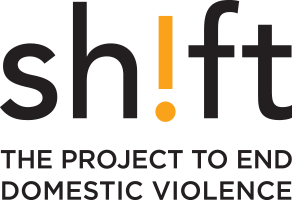MEN AND BOYS
Rationale
While the rationale for engaging men and boys in violence prevention is increasingly understood both by researchers and practitioners, little is known about how to do this in ways that are meaningful and effective. Ongoing reviews of academic literature, grey literature, and government-based domestic violence prevention plans from around the world clearly demonstrate that this is an emergent field in which very few best practices have been identified. We believe that if we advance gender equality and equity, promote healthy masculinities, address the intersections of racism, heterosexism, and oppression, and build healthy relationship competencies, the perpetration of multiple forms of male violence will stop.
In order to do this, we need to unpack how patriarchal beliefs shape the values and behaviours of our society. Patriarchal attitudes exist within families and are reinforced in schools, religious institutions and workplaces. As a society, we are conditioned to think about masculinity and femininity in a certain way. Thus, dismantling and changing patriarchal culture and its negative impact is work that men and women must do together.


Our Response
Our research indicates a need to invest in new programming, practices and policies that create the conditions, supports and skills that support men and boys to:
- go through a transformational process to embrace gender equality and healthy, inclusive, non-violent, positive masculinities, and become allies to women and girls;
- challenge and evolve their beliefs about race, gender and sexual orientation (i.e., heterosexism, toxic masculinities, etc.);
- model and advocate for gender equality and non-violent (healthy) masculinities,
- teach other men and boys the skills to enjoy healthy relationships with their intimate partner; and
- build the skills and capacity to safely and effectively challenge and disrupt violence within their peer group, workplace, and social spaces.

In 2011, Shift partnered with the Government of Alberta and identified “engaging men and boys to promote gender equality, respect and healthy relationships” as a key priority in the Family Violence Hurts Everyone: A Framework to End Family Violence in Alberta.
In 2013, we partnered with White Ribbon Canada and released Engaging Men and Boys in Domestic Violence Prevention: Opportunities and Promising Approaches. This report states that we need to engage men and boys in violence prevention activities within the settings and environments where they naturally congregate (school, work, where they play and worship). The report highlights 67 promising approaches in the areas of policy, programs and practices, and citizen-led initiatives.
In 2014, again, we partnered with the Government of Alberta to develop the first-of-its-kind in the Global North – an action plan to engage men and boys in preventing violence against women. The primary recommendation in the plan was to ensure that engaging men and boys is embedded in a broader, population-based approach to advance gender equality and prevent violence against women. We advocated to embed transformational messaging and learning experiences into situations and activities in which men and boys already participate, rather than trying to improve recruiting mechanisms for conventional violence prevention programs.
In 2015, we released No Man Left Behind: How and Why to Include Fathers in Government-Funded Parenting Strategies: a call to policy makers and community agencies to promote positive fatherhood and father-friendly practices as a violence prevention strategy. To advance this area, in 2016, Shift partnered with Catholic Family Service in Calgary to create a “Fatherhood Collective” to advance research and practice change with local funders and human service organizations throughout Calgary and Area.
In 2016, Shift was awarded funding from the Government of Alberta and the United Way of Calgary and Area to help with the implementation of the Engaging Men and Boys Action Plan.
In 2017, we launched the Engaging Men in Violence Prevention and Gender Equality Learning Collaborative. Comprised of practitioners, government representatives, and researchers from 14 organizations in Alberta, the collaborative was designed to develop non-programmatic approaches to engage men in violence prevention and gender equality in settings where they work, play, learn, live, and worship.
In 2018, Shift released a report to better understand how the human services sector can better support the needs of men while furthering the goal of violence prevention. Please find results and recommendations in our report Serving Calgary Men across the Prevention Continuum. We also produced a report on the Perceptions of Gender Norms amongst Men and Boys to inform the development of a federal strategy to engage men and boys in advancing gender equality.
In 2019, Shift completed a research study – Tomorrow’s Men Today: Canadian Men’s Insights on Engaging Men and Boys in Creating a More Gender Equal Future – to inform the development of a federal engagement strategy. Findings from this qualitative study revealed the motivations and experiences of pro-feminist men currently engaged in gender equality work in Canada including how we can better attract, invite, encourage, and support other men and boys to get engaged and mobilized in this work. As a result, Shift was awarded funding to work with Next Gen Men to begin building a network of pro-feminist and feminist leaders across the country.
In 2020, in partnership with the Engaging Men Learning Collaborative, we released Changing Contexts: A Framework for Engaging Male-Oriented Settings in Gender Equality and Violence Prevention – Practitioners’ Guide. The purpose of this framework is to support Human Services professionals to engage and mobilize men in male-dominated settings to advance gender equality and stop gender-based violence. The approach adds to our behavioural change toolbox by outlining ways to surface and shift contextual influences that shape men’s behaviours related to gender-based violence and inequality.


